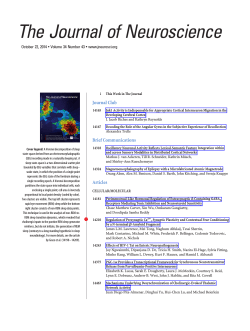
Mixed, fixed, and random effects models
Mixed, fixed, and random effects models Presented by: Shannon Hodges Jessica Raterman Definitions Fixed Effects Model: Assumes one true effect size which underlies all studies in the analysis; differences due to random error. Random Effects Model: Considers within study variance (like fixed-effects) and also between study variance (heterogeneity); unobserved variables assumed to be uncorrelated with (or, more strongly, statistically independent of) all the observed variables. – RE modeling special case of the FE modeling Mixed Model: Contains both fixed and random effects. FEM vs. REM • Fixed effects model -- individual specific effect is correlated with the independent variables – Dummies are considered part of the intercept – Examines group differences in intercepts – Assumes the same slopes and constant variance across entities or subjects FEM vs. REM • Random effects model -- individual specific effects are uncorrelated with the independent variables – Dummies act as an error term – Data consist of a hierarchy of populations whose differences relate to that hierarchy – Estimates variance components for groups and error, assuming the same intercept and slopes. – The difference among groups (or time periods) lies in their variance of the error term, not in their intercepts. Fixed Effects Model Examples of fixed effects factors: – Sex: Male and Female – Age: Minor and Adult Random Effects Model Yij 0 j ij Examples of random effects factors: - group identity - habitat identity - parent identity - genotype Example: Fixed vs. Random Intercepts Slopes When to choose multilevel? • If dependence is a problem – OLS regression suspect because the assumption of independent residuals is invalid • If dependence is interesting – Disentangle variability at the various levels… see the structure in more detail – Give insight as to the directions where further explanation may be sought Choosing between fixed and random models • 1. If groups are unique entities and inference should focus on these groups, then FEM – This often is the case with a small number of groups • 2. If groups are regarded as sample (subset) from a population and inference should focus on this population, then REM – This often is the case with a large number of groups. • 3. If level-two (macro) effects are to be tested, then REM Snijders (2011) Choosing between fixed and random models • 4. If group sizes are small and there are many groups, and it is reasonable to assume exchangeability of group-level residuals, then REM makes better use of the data • 5. If the researcher is interested only in within-group effects, and is suspicious about the model for betweengroup differences, then FEM is more robust • 6. If group effects are not nearly normally distributed, REM is risky (or use more complicated multilevel models). Snijders (2011) FEM vs. REM Bell & Jones (2015): There are few occasions in which FE modeling is preferable to RE modeling • REM: greater flexibility and generalizability; more parsimonious parameterization; and crucial ability to model context. • “Assumptions made by RE models, including the exogeneity of covariates and the Normality of residuals, are at least as reasonable as those made by FE models when the model is correctly specified.” • “In controlling out context, FE models effectively cut out much of what is going on, goings-on which are usually of interest to the researcher, the reader, and the policy maker.” FEM vs. REM • REM omits the fixed effect and models the error structure to overcome omitted variables bias – REM is the way to estimate coefficients for variables exhibiting multicollinearity • Treating predictors in a model as a RE allows for more general conclusions • If the RE assumption holds, the REM is more efficient than the FEM. If not, the REM is not consistent. Mixed Effects Models • Assumes that a linear relationship exists between independent and dependent variables. y X Z where fixed effects parameter estimates X fixed effects Z Random effects parameter estimates random effects errors Variance of y V ZGZ ' R G and R require covariance structure fitting Advantages of Mixed Effects Models 1. 2. 3. 4. Can allow random effects to be properly specified and computed, unlike the GLM. It can allow correlation of errors, unlike the GLM. It therefore has more flexibility in modeling the error covariance structure. It can allow the error terms to exhibit nonconstant variability, unlike the GLM, allowing more flexibility in modeling the dependent variable. It can handle missing data, whereas the repeated measures GLM cannot. Mixed vs. Fixed Figure 2. Correlation between the number of offspring per decade of pair duration and the total length a pair lasted. References • Bell, A., & Jones, K. (2015). Explaining fixed effects: random effects modeling of timeseries cross-sectional and panel data. PSRM, 3(01), 133-153. • Crawley, M. J. (2007). “Mixed Effects models.” The R Book (First ed.) NJ: Wiley. Fernandez-Duque, E. & Huck, M. (2013). Till Death (Or an Intruder) Do Us Part: Intrasexual-Competition in a Monogamous Primate. PLOS One, 8(1): e53724. • Schofer, E. Multilevel Models. [Internet]. Available at: http://www.socsci.uci.edu/~schofer/2007soc8811/publicfiles.htm • Snijders, T. A. (2011). Multilevel analysis (pp. 879-882). Springer Berlin Heidelberg. pp. 627-659. • Wooldridge, Jeffrey M. (2013). "Fixed Effects Estimation.” Introductory Econometrics: A Modern Approach (Fifth international ed.). Mason, OH: South-Western. pp. 466–474. • Yaffee, R.A. Mixed Analysis of Variance Models with SPSS. [Internet]. Available at: http://google.ttu.edu/search?q=yaffee+&numgm=5&site=Campus&client=texas_tech&o utput=xml_no_dtd&proxystylesheet=texas_tech&submit.x=0&submit.y=0
© Copyright 2025










